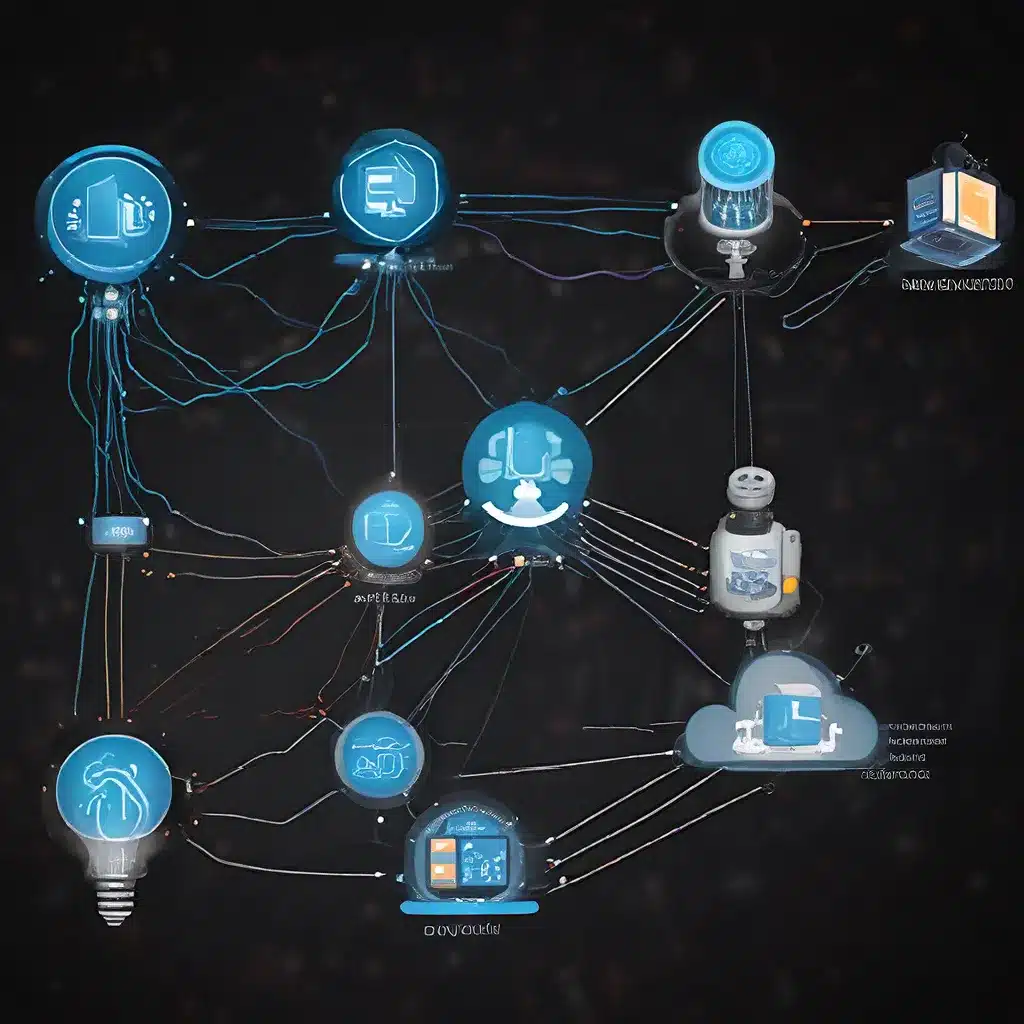
In the rapidly evolving landscape of the Internet of Things (IoT), the efficient management of sensor networks has become a critical challenge. As the number of connected devices continues to grow exponentially, the need for adaptive sensor algorithms and dynamic resource allocation has become increasingly paramount. This article delves into the intricacies of sensor network design, exploring the energy-constrained nature of IoT applications and the innovative solutions that are emerging to address these challenges.
The Rise of Energy-Constrained IoT Applications
The proliferation of IoT devices has transformed various industries, from smart cities and industrial automation to environmental monitoring and healthcare. These applications often rely on sensor networks to gather and transmit data, enabling real-time decision-making and optimized resource utilization. However, the energy-constrained nature of many IoT deployments poses a significant challenge.
Sensor nodes in IoT networks are typically battery-powered or energy-harvesting devices, which have limited energy resources. Continuous data collection, processing, and communication can rapidly deplete these energy sources, leading to interrupted service, reduced reliability, and increased maintenance costs. Addressing this issue is crucial for the widespread adoption and long-term sustainability of IoT technologies.
Adaptive Sensor Algorithms for Dynamic Resource Allocation
To overcome the energy constraints in IoT applications, researchers and practitioners have developed adaptive sensor algorithms that enable dynamic resource allocation. These advanced techniques leverage real-time data analysis, machine learning, and optimization techniques to optimize the utilization of sensor resources, such as energy, bandwidth, and computational power.
One key aspect of these adaptive algorithms is their ability to adjust sensor sampling rates, data transmission frequencies, and processing workloads based on the dynamic needs of the application. By continuously monitoring the environment and the state of the sensor network, these algorithms can make informed decisions to balance the trade-offs between data accuracy, network lifetime, and overall system performance.
Adaptive Sampling Techniques
Adaptive sampling is a crucial component of these adaptive sensor algorithms. Rather than relying on fixed sampling rates, adaptive sampling techniques dynamically adjust the frequency of data collection based on factors such as temporal and spatial data variations, event detection, and energy availability. This approach can significantly reduce the energy consumption of sensor nodes without compromising the quality of the collected data.
For example, in environmental monitoring applications, sensors may only need to collect data at high frequencies during periods of significant changes, such as during a flood or a wildfire. During periods of relative stability, the sampling rate can be reduced to conserve energy. This adaptive approach ensures that critical events are captured while optimizing the overall energy usage of the sensor network.
Dynamic Network Topology and Data Routing
In addition to adaptive sampling, dynamic network topologies and data routing algorithms play a crucial role in energy-efficient sensor network design. Sensor nodes in IoT networks can be organized in various topologies, such as star, mesh, or hierarchical configurations, each with its own advantages and trade-offs in terms of energy consumption, scalability, and resilience.
Securing Energy-Constrained IoT Sensor Networks
As sensor networks become more ubiquitous and interconnected, the security of these systems has become a growing concern. IoT devices, often with limited computational resources and power, can be vulnerable to various cyber threats, including eavesdropping, data manipulation, and denial-of-service attacks.
Addressing the security challenges in energy-constrained IoT sensor networks requires a multifaceted approach. Lightweight cryptographic algorithms, secure data aggregation, and distributed authentication mechanisms are some of the techniques being developed to ensure the confidentiality, integrity, and availability of sensor data without excessively draining the limited energy resources of the nodes.
Towards a Sustainable IoT Future
As the Internet of Things continues to evolve and expand, the importance of adaptive sensor algorithms and dynamic resource allocation will only grow. By leveraging these advanced techniques, IoT deployments can achieve better energy efficiency, improved reliability, and enhanced security, paving the way for a more sustainable and scalable IoT future.
Through the integration of machine learning, optimization algorithms, and energy-aware design principles, the sensor networks of tomorrow will be better equipped to meet the demands of diverse IoT applications, from smart cities and industrial automation to environmental monitoring and healthcare. By addressing the energy-constrained nature of these systems, we can unlock the full potential of the IoT and drive transformative changes across various industries and sectors.